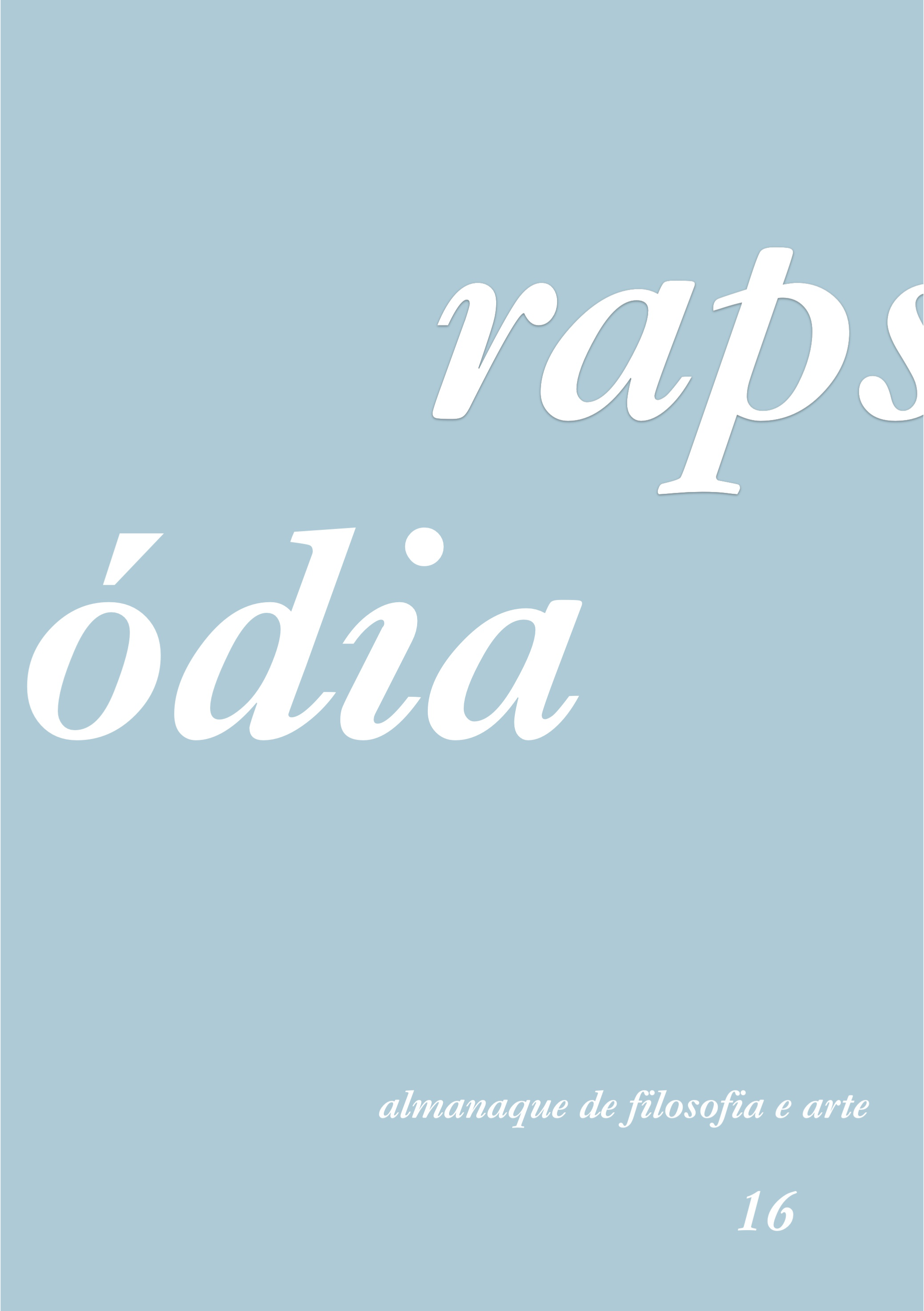O que significa (significado/relevância) música? Um exame crítico da referência musical
DOI:
https://doi.org/10.11606/issn.2447-9772.i16p10-33Keywords:
Musical reference, Music and language, Musica and feelings, Eduard HanslickAbstract
Translation Reginaldo Rodrigues Raposo
The text deals with the question of “meaning” in music according to the sense of referentiality. Having as a perspective a broader concept of music, it is questioned whether or not music can reach the character of a sign or an expressive function. From this, we first discuss the problematic relationship that music maintains with language and, then, its possibility or not of establishing itself as an autonomous language. Next, the question of the relationship between music and feelings is more systematically approached, taking up some fundamental observations of Eduard Hanslick. Finally, it concludes with the impossibility of intrinsic referentiality, neither through language nor through feelings.
Downloads
References
BEHREND, J.-E. “Das dritte Ohr”. Rowohlt, 1985.
BELTING, H. Bild und Kult. Eine Geschichte des Bildes vor dem Zeitalter der Kunst. Munique, 1990.
BERTINETTO, A. “Anerkennung der Kunst – Anerkennung durch Kunst”. In: Transzendentalphilosophie und Person. Leiblichkeit – Interpersonalität – Anerkennung. Ed. Christoph Asmuth. Bielefeld, 2007, pp. 336-348.
DARWIN, C. The Descent of Man, and Selection in Relation to Sex. Vol. 1. Londres 1871.
DÜRR, W. Sprache und Musik. Geschichte, Gattungen, Analysemodelle. Kassel / Basiléia / Londres / Nova York / Praga: Bärenreiter, 1994.
ECO, U. Streit der Interpretationen. Konstanz,1987.
GOODMAN, N. Sprachen der Kunst. Entwurf einer Symboltheorie. Frankfurt am Main, 1996.
GRIMM, J. “Rede über das Alter (1859)”. In: Kleinere Schriften I (Reden und Abhandlungen), Hildesheim, 1965.
HANSLICK, E. Vom Musikalisch-Schönen. Ein Beitrag zur Revision der Aesthetik der Tonkunst. 5ª edição melhorada. Leipzig, 1876.
HUSSERL, E. Zur Phänomenologie des Inneren Zeitbewußtseins, (Husserliana v. X). Haia, 1966.
KIVY, P. “Experiencing the Musical Emotions”. In: New Essays on Musical Understanding. Oxford, 2001.
KIVY, P. Music Alone. Philosophical Reflections on the Purely Musical Experience. Ithaca/Londres, 1990.
KIVY, P. The Corded Shell. Reflections on Musical Expression. Princeton, 1980.
LEIBNIZ, G. W. F. Neue Abhandlungen über den menschlichen Verstand. Hamburgo, 1996.
MAHRENHOLZ, S. Musik und Erkenntnis. Eine Studie im Ausgang von Nelson Goodmans Symboltheorie. Stuttgart/Weimar, 1998.
MOTTE-HABER, Helga de la (ed.). Klangkunst. Handbuch der Musik im 20. Jahrhundert. Laaber, 1999.
NOWAK, A. “Musikalische Logik - philosophische Logik”. In: Philosophischer Gedanke und musikalischer Klang. Zum Wechselverhältnis von Musik und Philosophie. Ed. Christoph Asmuth, Gunter Scholtz, Franz-Bernhard Stammkötter, Frankfurt am Main 1999, pp. 175-192.
PATEL, A. D. “Language, music, syntax and the brain”. In: Nature Neurosciences 6 (2003), pp. 674-681.
SHINER, L. The invention of art: a cultural history. Chicago/Londres, 2001.
SIMMEL, G. “Psychologische und ethnologische Studien über Musik”. In: Zeitschrift für Völkerpsychologie und Sprachwissenschaft, 13 (1882), 3ª ed., pp. 261-305.
VOSS, Christiane. Narrative Emotionen. Berlim/Nova York, 2004.
ZANETTE, D. H. “Zipf's law and the creation of musical context”. In: Musicae Scientiae 10 (2006) pp. 3-18.
ZIPF, G. K. The Psycho-Biology of Language. Boston, 1935.
Downloads
Published
Issue
Section
License

This work is licensed under a Creative Commons Attribution-NonCommercial-ShareAlike 4.0 International License.



